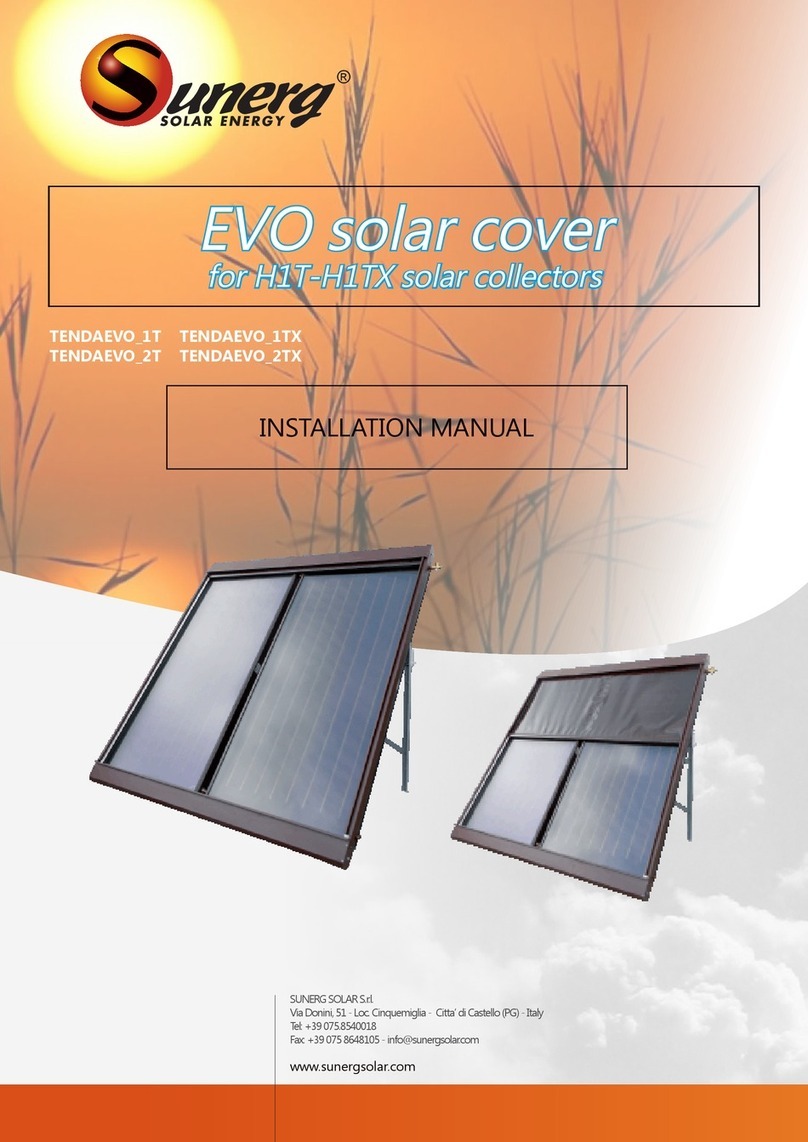4.4.8 During modules interconnection, ensure to fix the connecting cables to supporting bracket, so as to
restrict the swing amplitude of the slack part of the cables.
4.4.9 Abide by the allowable minimum bending radius of the cables (suggest no less than 43mm).
4.4.10 Always protect the cable with conduit where animals or children can touch it.
4.4.11 Please use the connector which is specially designed for photovoltaic system, and assemble it with the
tools recommended or specified by the manufacturer. In case that the connector applicable to the solar
photovoltaic system is required, please contact the local supplier. Ban different connectors to plug each other.
4.4.12 Make sure that the polarity is correct when connecting the module with inverter, storage battery or
combiner box to avoid the damage of bypass diodes in the modules due to incorrect polarity.
4.4.13 Do not drill holes in the frame, this may reduce the mechanical load ability and cause corrosion of the
frame.
4.4.14 Do not scratch the anodized coating of the frame (except for grounding connection), this may cause
corrosion of the frame or reduce the mechanical load ability.
4.4.15 Modules can't be used to replace the roof and wall materials, partial replacement is not allowed.
4.4.16 Any part (including nameplate) of modules supplied by Sunerg Solar can't be dismantled without
permission.
5 Installation condition
5.1 Working environment
Sunerg Solar’s PV module should operate in the following environmental conditions:
5.1.1Ambient temperature: -20℃ to +45℃
5.1.2 Operating temperature of the module: -40℃ to +85℃
5.1.3 Humidity: 85%RH
5.1.4 Mechanical load bearing capacity: the modules have passed the mechanical load test of wind pressure of
1200Pa and snow pressure of 5400pa; at the same time, they have passed the mechanical load test of wind
pressure of 2400Pa and snow pressure of 3600Pa. (Only limited to the PV module models mentioned in this
manual).
Note: The module mechanical load is based on the installation method and installation site, in the calculation
of mechanical load by the professional installer according to the system design requirements to calculate.
5.2 Installation position
5.2.1 In most applications, PV modules should be installed in a location where they will receive maximum
sunlight throughout the year. In the northern hemisphere, modules should typically face south, and in the
southern hemisphere, modules should typically face north.
5.2.2 The module shall be installed in the place where the sunshine is adequate. the module surface shall not be
partly shaded by trees, building, clothes, tools, packaging materials, etc. because these objects will form
shadow in the module surface leading to loss of system output power.
5.2.3 The module shall be installed in the well-ventilated place; meanwhile, enough space for airiness shall be
sated at the back and sides of the module, so that the heat generated during operation can be radiated in time.
5.2.4 Modules can not be used in other excessive and harsh environments, such as hail, snow, sand, smoke, air
pollution, soot, flammable gases, near open flames, and highly corrosive substances (salt, salt spray, salt water,
acid rain) , As this will affect the module's safety and performance. If the installation environment is special,




























